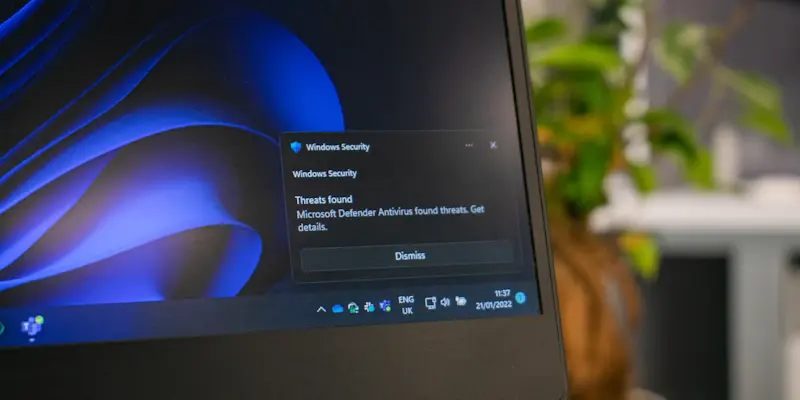In a significant update for musicians and producers alike, Microsoft has revamped MIDI support in Windows 11 with the release of Insider Preview Build 27788, introducing a completely rewritten MIDI framework. This crucial move showcases Microsoft’s efforts to modernize music synthesis and creation on its platform by adhering to the MIDI 2.0 standard. Since MIDI’s inception in 1983, this marks its first substantial upgrade and offers a promise of faster data transmission and higher-resolution messages, which translates into better timing and more precise control over musical parameters.
New MIDI Framework in Windows 11
Introduction of Windows MIDI Services
Microsoft’s introduction of the new framework, Windows MIDI Services, aims to reshape how MIDI operates within Windows 11. Rewriting the MIDI framework from scratch aligns with the cutting-edge MIDI 2.0 standard, facilitating improved musical expression and heightened device connectivity. This upgrade stands as a milestone, signifying the first major evolution of the protocol in nearly four decades. The MIDI 2.0 standard is designed to provide more detailed and efficient communication, leading to enhanced musical interactions and innovative possibilities for composers and performers alike.
The faster data transmission and higher-resolution messages inherent in MIDI 2.0 empower musicians to achieve a new level of precision in timing and control. This precision is particularly crucial for complex music production tasks, ensuring that every nuance of a performance is captured and reproduced with clarity. By modernizing its MIDI support, Microsoft has positioned Windows 11 as a powerful platform for contemporary music creation. The enhanced capabilities are expected to be game-changing for artists who rely on MIDI technology in their workflow, offering a rekindled sense of creativity and technical prowess.
Collaboration with the Association of Musical Electronics Industry
Aside from introducing an updated MIDI framework, Microsoft has collaborated with the Association of Musical Electronics Industry of Japan (AMEI) to further bolster the capabilities of its platform. Through this partnership, the high-speed USB MIDI 2.0 Class Driver developed by AmeNote has been integrated into Windows 11. This driver strikes a pivotal balance, serving both MIDI 2.0 devices and class-compliant MIDI 1.0 devices, thereby offering enhanced performance across a broad spectrum of equipment. Users now have the flexibility to manually assign this driver to any compatible MIDI 1.0 device, harnessing improved capabilities that were previously unattainable.
The high-speed USB MIDI 2.0 Class Driver represents a significant leap forward in terms of data handling and response times. By ensuring backward compatibility, Microsoft has created a bridge for users still relying on MIDI 1.0 devices while simultaneously unlocking the potential for future innovations with MIDI 2.0 devices. This dual compatibility is crucial as it allows users to transition smoothly to more advanced technologies without forsaking their existing investments in hardware. Such an approach underscores Microsoft’s commitment to inclusivity and seamless user experiences.
Broader Implications and Future Prospects
Adoption and Hardware Support
Although MIDI 2.0 has been available for several years, its adoption on the Windows platform signifies a significant milestone for Microsoft. This development, however, will realize its full potential only once hardware instruments and Digital Audio Workstations (DAWs) widely support MIDI 2.0. The collaboration between Microsoft and AMEI serves as a cornerstone for this anticipated transition, promising enhanced compatibility and future-proofing for users. Musicians and producers eagerly await the broader acceptance in the industry, which will amplify the utility and advantages of these advancements.
Microsoft’s proactive stance of encouraging users to download the latest Insider Preview allows the community to engage hands-on with the new MIDI Services. This approach ensures that potential issues are ironed out and valuable feedback is gathered before the official release. However, it’s important to note that this preview is specifically intended for users comfortable with pre-release software, as it may not be suitable for main machines. Such a phased rollout strategy helps in creating a robust and user-friendly MIDI framework that aligns with real-world requirements and expectations.
Anticipated Mainstream Integration
While the MIDI enhancements will eventually be incorporated into the mainstream version of Windows 11, a period of transition is inevitable. Users and developers will need to adapt to the new standards and incorporate them into their workflow. This process, though gradual, promises a notable shift in the music creation landscape. The advancements introduced by Microsoft’s overhaul of MIDI support, combined with the new Windows MIDI Services and the collaboration for a high-speed USB MIDI 2.0 Class Driver, represent a major step forward in the platform’s capabilities.
The adoption of such cutting-edge technologies suggests a promising future where streamlined digital audio processes and enhanced musical creativity become the norm. As more hardware manufacturers and software developers update their offerings with MIDI 2.0 compatibility, a new era of music production will unfold. Microsoft’s investments and efforts in this domain are set to play a pivotal role in shaping the next generation of musical expression and production, empowering artists to push the boundaries of what is possible in the digital domain.
Microsoft’s Commitment
Musicians and producers have received a considerable update with Microsoft’s latest changes in Windows 11. Released through Insider Preview Build 27788, this update features an entirely rewritten MIDI framework, reflecting Microsoft’s commitment to keeping pace with modern music synthesis and creation techniques by embracing the MIDI 2.0 standard. MIDI, first introduced in 1983, has long been a cornerstone of electronic music production. This update marks its most significant overhaul to date. The revamped framework promises enhanced performance with faster data transmission and higher-resolution messages. These improvements contribute to superior timing and more precise control over musical parameters, a substantial advancement for those who rely on MIDI for both professional and creative endeavors. By modernizing this fundamental element, Microsoft aims to offer a more robust and efficient platform for users, ensuring that music production on Windows 11 remains at the cutting edge of technology.

